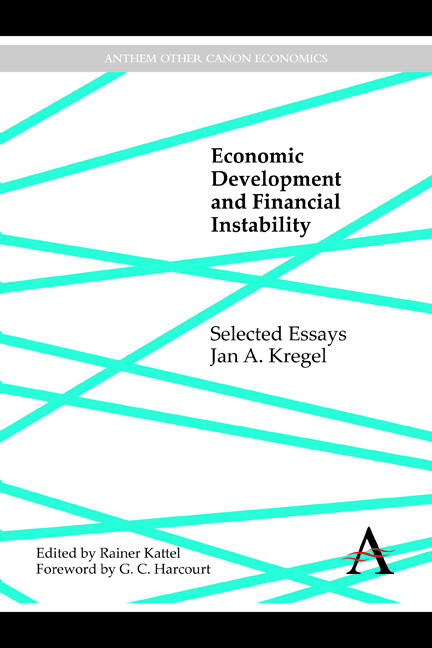Book contents
- Frontmatter
- Contents
- Foreword
- Publication History
- I Theoretical Discussions
- II Finance for Development
- III The Crisis in the US and the EU
- 16 Alternative Economic Analyses of German Monetary and Economic Unification: Monetarist and Post Keynesian
- 17 Currency Stabilization through Full Employment: Can EMU Combine Price Stability with Employment and Income Growth?
- 18 Minsky's “Cushions of Safety,” Systemic Risk and the Crisis in the Subprime Mortgage Market
- 19 Why Don't the Bailouts Work? Design of a New Financial System versus a Return to Normalcy
- 20 Is This the Minsky Moment for Reform of Financial Regulation?
- 21 Debtors' Crisis or Creditors' Crisis? Who Pays for the European Sovereign and Subprime Mortgage Losses?
- 22 Six Lessons from the Euro Crisis
- 23 Minsky and the Narrow Banking Proposal: No Solution for Financial Reform
- Index
17 - Currency Stabilization through Full Employment: Can EMU Combine Price Stability with Employment and Income Growth?
from III - The Crisis in the US and the EU
Published online by Cambridge University Press: 05 November 2014
- Frontmatter
- Contents
- Foreword
- Publication History
- I Theoretical Discussions
- II Finance for Development
- III The Crisis in the US and the EU
- 16 Alternative Economic Analyses of German Monetary and Economic Unification: Monetarist and Post Keynesian
- 17 Currency Stabilization through Full Employment: Can EMU Combine Price Stability with Employment and Income Growth?
- 18 Minsky's “Cushions of Safety,” Systemic Risk and the Crisis in the Subprime Mortgage Market
- 19 Why Don't the Bailouts Work? Design of a New Financial System versus a Return to Normalcy
- 20 Is This the Minsky Moment for Reform of Financial Regulation?
- 21 Debtors' Crisis or Creditors' Crisis? Who Pays for the European Sovereign and Subprime Mortgage Losses?
- 22 Six Lessons from the Euro Crisis
- 23 Minsky and the Narrow Banking Proposal: No Solution for Financial Reform
- Index
Summary
Summary Introduction
The introduction of the EURO in 1999 will see the completion of a process initiated by Roy Jenkins' decision to breathe new life into the Treaty of Rome by reviving the project for a common currency. The path that has led from the Exchange Rate Mechanism, to the Single Market Act, to the revision of the original Treaty in Maastricht, has meant a transformation of the original objectives from a free trade zone to a zone of price stability. This has meant that other economic policy objectives have been subordinated to price stability and many countries have had to sacrifice growth and employment to attain the prerequisites for what the Germans call a “culture of stability”. While these other policy objectives can be ignored for a short period, once the Euro is introduced they will have to be faced. The original project for price stability overlooked these problems because it was presumed that price stability was a necessary and sufficient condition for the resumption of the kind of growth and employment experience that Europe had experienced before the Vietnam war and the oil crisis. However, this has not been the case.
The process of globalization of trade and production has created additional difficulties for the European unification project. In particular, it has raised the question of competition from developing countries using cheap labor.
- Type
- Chapter
- Information
- Economic Development and Financial InstabilitySelected Essays, pp. 269 - 280Publisher: Anthem PressPrint publication year: 2014



